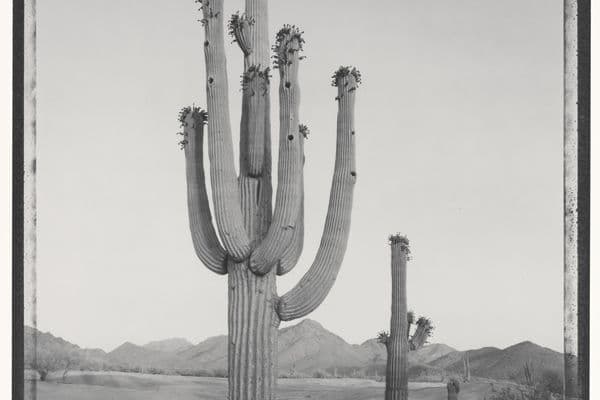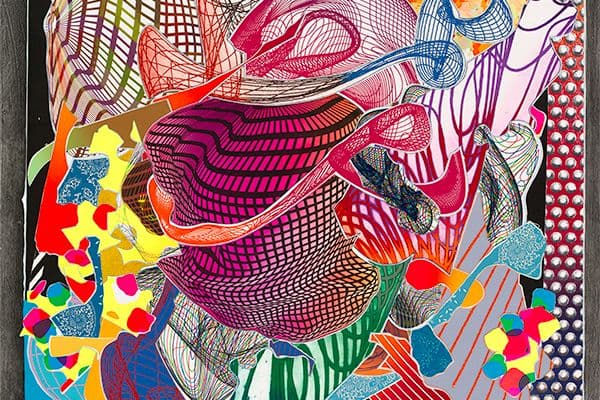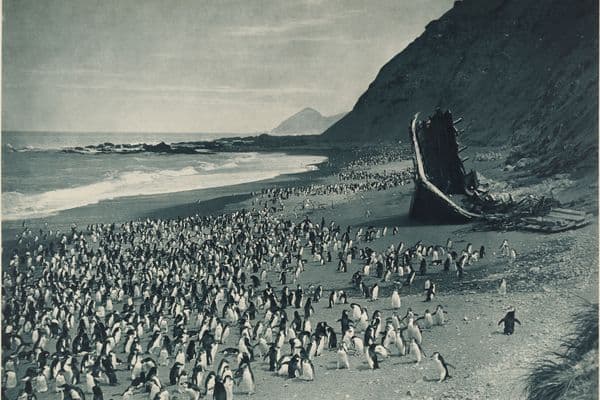The Documentary Conscience
Lewis Hine and the Farm Security Administration
25 Aug – 21 Oct 1984

Arthur Rothstein, Plantation owner's daughter checking weight of cotton - Kaufman Co., Texas., (1936), National Gallery of Australia, Kamberri/Canberra, Purchased 1981.
Exhibition Pamphlet Essay
The popular adage 'the camera never lies' reflects a general belief in the photograph as a truthful document. Consequently, photography has been widely used to document social conditions and help effect social reforms.
In one of photography’s earliest social documentary applications Thomas Annan in 1868 made a photographic survey of an urban slum for the Glasgow City Improvement Trust. In 1877 John Thomson produced photographs of London's poor for the book Street Life in London and a decade later Jacob Riis photographed the slums of New York City. In Australia, John Degotardi documented the Department of Public Works' cleaning-up procedures after an outbreak of bubonic plague in the overcrowded Rocks area of Sydney in 1900.
Lewis Hine trained as a sociologist and used photography to record social injustices and thereby facilitate reform. From 1907 to 1926 he worked for the National Child Labour Committee, travelling throughout the United States to document child labour abuses. His major areas of concern were tenement home work, in which work was given out by manufacturers and finished in the home by all members of the family, and the employment of children as young as three years old in factories and casual jobs.
Photographs and articles by Hine were published in liberal reform magazines, notably The Survey, and socialist magazines such as International Socialist Review. He captioned his photographs, often at some length, giving further weight to the photograph as documentary evidence by specifying and authenticating the person and situation photographed. His work on child labour abuses was instrumental in subsequent reforms such as the Labour Standards Act of 1938 which set an age limit for the employment of children in the United States. Hine also lectured extensively, using his photographs in slide presentations.
The photographs of Lewis Hine stand in opposition to the art photography conventions of the early twentieth century as championed, for example, by the American photographer Alfred Stieglitz in the earlier issues of his journal Camera Work (1903-1917). In contrast to Pictorialism's soft-focus aestheticizing effects, Hine's photographs are sharp-focus and direct, without artifice. Like Jacob Riis, he used flash to great effect, as in the photograph Pin boys in a bowling alley.
Hine engages with his subjects, presenting them in their working environments in unheroic, unsentimental terms. Above all he conveys a sense of their personal dignity. The sweepers and doffers1 photographed at Rhode Island in 1909, for instance, may be exploited and oppressed but Hine's photograph nevertheless asserts their integrity as individuals.
Hine's style of documentary photography proved to be an influential model for the Farm Security Administration project of the 1930s although his offer to work for the project was rejected, principally due to his age.
The Wall Street crash in 1929 triggered the onset of the Great Depression. In 1932 Franklin Roosevelt defeated President Herbert Hoover at the polls and in an effort to counter the worsening economic situation implemented the New Deal programme. One of the many agencies established under the New Deal initiatives was the Resettlement Administration, retitled the Farm Security Administration in 1936. It was headed by Rexford Guy Tugwell, who in 1935 appointed Roy Stryker, an economist from Columbia University, New York, as chief of the Division of Information, Historical Section.
Stryker employed a team of photographers which included Margaret Bourke-White, Walker Evans, Andreas Feininger, Dorothea Lange, Russell Lee, Arthur Rothstein, Ben Shahn, Arthur Siegel and Marion Post Wolcott. Their aim was to create public awareness of the plight of rural Americans impoverished by the effects of a four-year drought and unsound farming practices, and to record the achievements of the government in helping them. Roy Stryker issued his photographers with written details of the type of photographs required. They were encouraged to document 'not the America of the unique, odd or unusual happening, but the America of how to mine a piece of coal, grow a wheatfield or make an apple pie'.2
Between 1935 and 1946 photographers with the F.S.A. and the Office of War Information produced more than 270,000 photographs, the negatives of which are now housed in the Prints and Photographs Division of the Library of Congress, Washington, DC, from which reprints may still be ordered. These photographs were distributed to schools, newspapers, magazines, libraries, department stores, museums, conventions and public agencies. The captions which accompanied the photographs and the sequencing of the images were essential to the communication of F.S.A. ideas.
F.S.A. photography was part of the larger documentary impulse which informed the visual arts and literature of the 1930s. As defined by British film-maker John Grierson, the documentary was 'the creative treatment of actuality'. It was dominated by humanist values and characterized by an engagement with external reality and the absence of overt subjectivism. The strong interest in distinctive regional characteristics was also expressed for example, in the paintings of Grant Wood and the novels of John Steinbeck.
One of the most important of the F.S.A. photographers was Walker Evans, who worked with the project from 1935 to 1938, largely in the south-eastern states. In the summer of 1936 he produced the photographs of three Alabama sharecropper families which were published in James Agee's classic book, Let Us Now Praise Famous Men, 1941. One of the most famous of these photographs, Allie Mae Burroughs, wife of a cotton sharecropper, Hale County, Alabama, is included in the exhibition.
During his F.S.A. period Evans generally worked with a large-format 8" x 10" camera mounted on a tripod, which necessitated a relatively slow and deliberate approach. By contrast, the hand-held 35mm camera offered greater mobility and speed to photographers like Ben Shahn and (on occasions) Arthur Rothstein. Due to the long exposures required for maximum depth of field, Evans's subjects were obliged to hold their poses for several seconds. At times he even directed their poses according to his compositional requirements.
Evans characteristically photographed his subjects frontally. People, buildings, signs and street scenes are all treated equally. In their clear and meticulous attention to detail the photographs can be read as visual inventories. His view of America, as published in American Photographs, 1938, is not depressing. Despite their often appalling material circumstances, Evans endows his subjects and their homes with a transcendent humanism.
Arthur Rothstein graduated from Columbia University, New York, in 1935 and joined the F.S.A. project that year as a young man of twenty. Like fellow F.S.A. photographer Margaret Bourke-White, Rothstein chose to photograph people at moments of heightened emotion. In the photograph of a sharecropper's wife and child in Washington County, Arkansas, the pregnant woman, flanked by a child, stares into what we presume is a barren landscape. It is a gesture of despondency and hopelessness.
In April 1936 Rothstein travelled to Cimarron County in Oklahoma. His photographs of the dust-bowl area, including Dust is too much for this farmer's son, became symbols of the F.S.A. project. They were the dramatic evidence of situations which government aid programmes could relieve.
Rothstein's photograph Skull, South Dakota, May 1936, also in this exhibition, attracted criticism of his working methods and of the F.S.A. Rothstein had photographed the skull against two backgrounds, one of grass and the other of parched earth. This was seen to be a manipulation and distortion of reality contrary to the documentary credo and also an exaggeration of the effects of the drought. The photograph caused a furore in the newspapers across the country and briefly became an issue in Roosevelt's re-election campaign in late 1936.
Of the three F.S.A. photographers in this exhibition Ben Shahn was perhaps the most socially committed. Shahn was a Lithuanian Jew whose parents fled religious persecution in Eastern Europe. His strong social conscience found expression in a variety of media, including prints, posters and paintings. In 1934 he worked as a muralist in New York City under the Public Works of Art scheme. During his involvement with the F.S.A. from 1935 to 1938 Shahn worked largely in the South and Midwest, producing over 5000 photographs. The photographs on display were all taken in Ohio in the summer of 1938.
Shahn often used a Leica 35mm camera equipped with a right-angle viewfinder so that his subjects were unaware of being photographed. Even when aware of being photographed they seem more relaxed and less self-conscious than Evans's formally posed subjects. Shahn's photographs are distinguished by their flatness; background and foreground are locked together with foreground figures looming large in the frame. He also favoured radical compositions, for example in Mrs Thaxton and daughter, near Mechanicsburg, Ohio, the daughter's face is bisected by the framing edges of the photograph.
While the photographs of Hine, Evans, Rothstein and Shahn are conceived as documents they are not unbiased and objective records of reality. They are subjective photographs, informed by the sensibilities of their makers. Their meaning is affected by how they are used.











